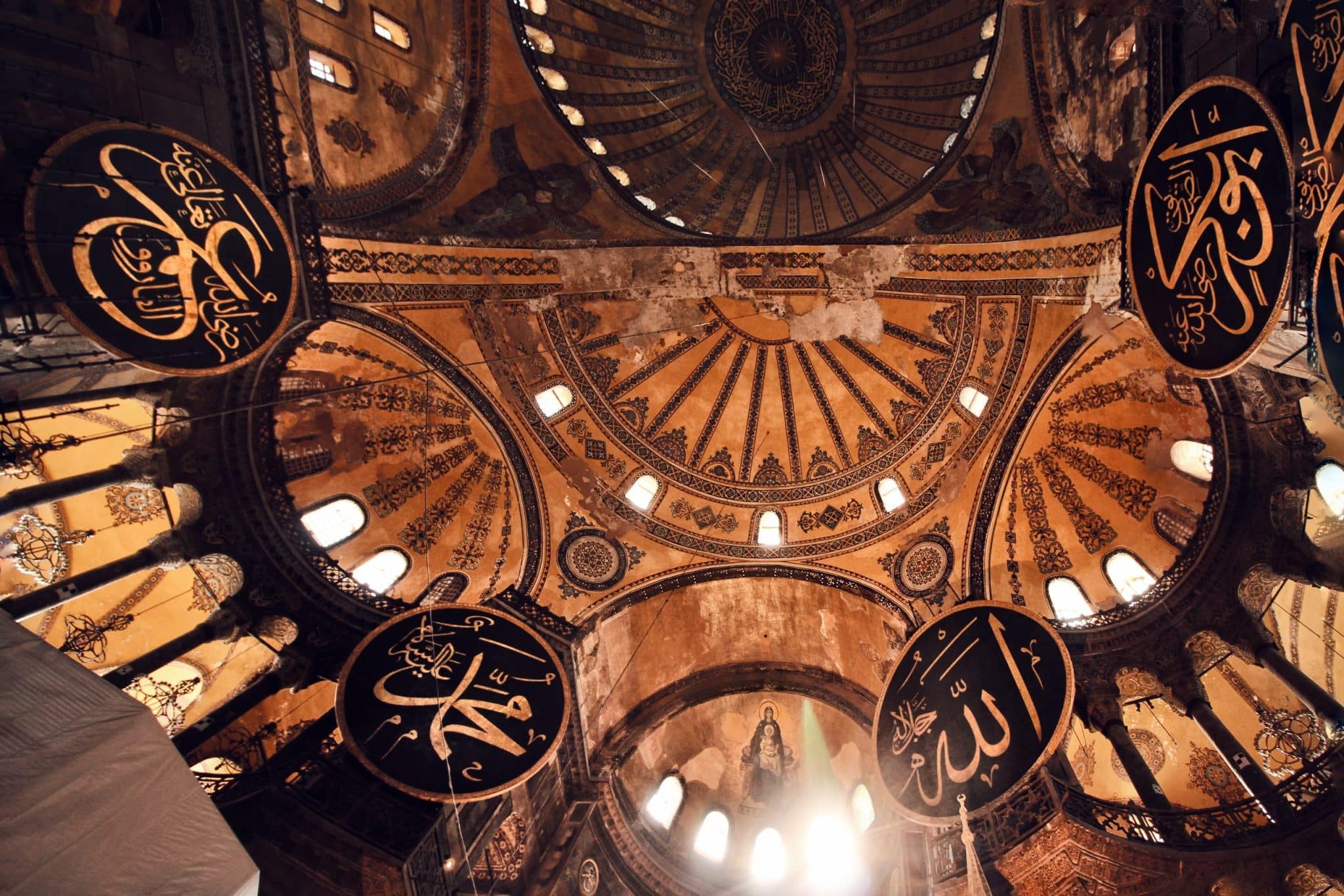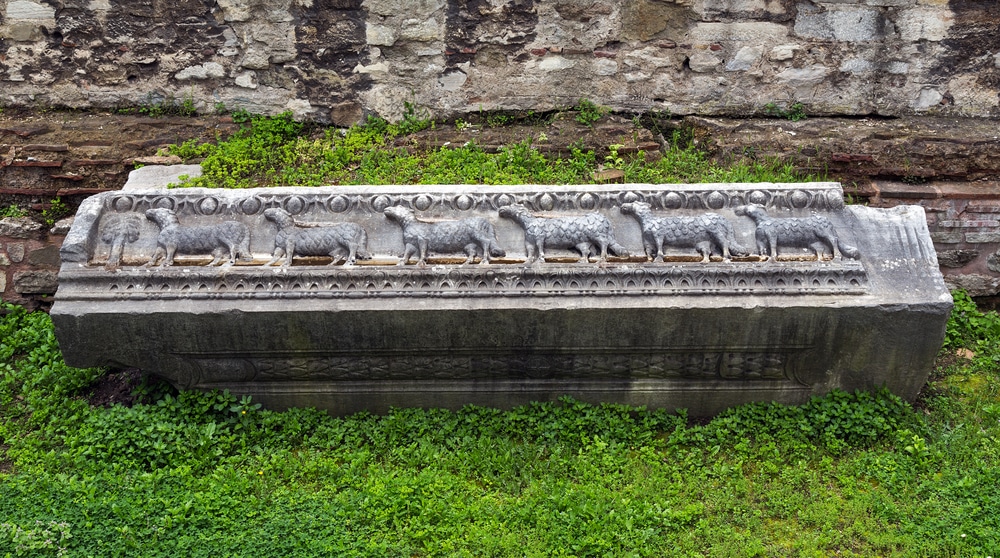Inside of the Hagia Sophia
The beautiful Grand Dome greets you as you enter the Hagia Sophia; the walls are covered with masterwork carvings and mosaics. These wall artworks tell stories of many religious times that have occurred in Hagia Sophia over the years.
The imperial lodge provides an attractive perspective of the nave and dome, while the Deesis Mosaic elicits strong emotions with its depictions of Christ, Mary, and John the Baptist. Every element, from the stunning Mihrab to the bewitching Minbar, displays the harmonic synthesis of Byzantine and Islamic influences.

The Grand Dome
The Grand Dome inside the Hagia Sophia is an engineering marvel of its time. Its sheer size and intricate ornamentation will surely leave you in awe. Look up, and you will admire the beautiful Byzantine mosaics that adorn its surface, showcasing scenes from the lives of Jesus, the Virgin Mary, and various saints.

The Emperor’s Door
This door is located on the southern side of the Hagia Sophia. This entrance was reserved exclusively for the Byzantine Emperors and added an aura of exclusivity and grandeur to their lifestyles. It has several intricate marble carvings on its surface that are a testament to the opulence of the Ottoman Sultans.

The Imperial Lodge
The Imperial Pavilion on the second floor is a testament to the Byzantine rulers who experienced the spiritual splendour of Hagia Sophia from an elevated position. The surface of the Imperial Pavilion has a variety of ornate furnishings and offers a magnificent view of the dome and nave. Unfortunately, after the last restoration the second floor is closed for visitors

The Dessis Mosaic
The Dessis Mosaic is located in the southern part of the Hagia Sophia gallery. It depicts Christ enthroned between the Virgin Mary and John the Baptist, who is shown pleading with him to intercede on behalf of humanity. The exquisite craftsmanship and emotional depth of this mosaic make it a must-see within the Hagia Sophia.

Ruins of the Second Hagia Sophia
Excavations were carried out in the western courtyard of Hagia Sophia in 1935 by A. M. Schneider of the German Archaeological Institute. These excavations unearthed the ruins of the portico, columns, capitals, and marble blocks, some of which are sculpted with reliefs. These are pieces of the triangular pediment that used to decorate the front of the building when it was first constructed. The lamb reliefs on a block represent the 12 apostles.

The Sherbet Alabaster
Other structures were added to the interior of the Hagia Sophia building during the Ottoman period; one of them is Murad III, who placed two jars made of "bektashi stone" (Eng. alabaster) from the Hellenistic Period (4th century BC) found in Pergamon in the main nave (main hall) of Hagia Sophia, and sherbet was served from them on special occasions. Currently, visitors can see the magnetic bektashi stone.
LEARN MORE
LEARN MORE
